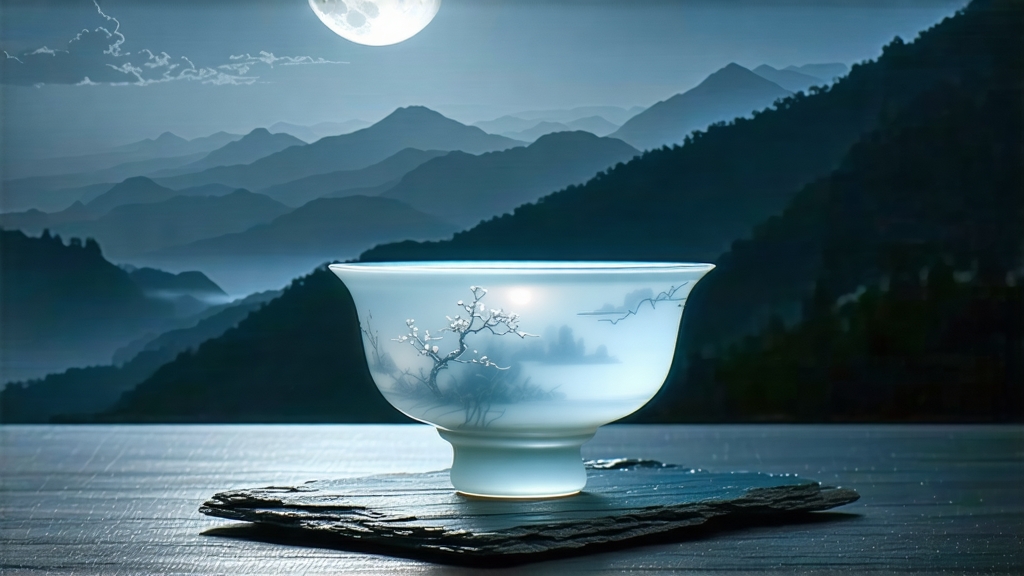
Tucked away in the southwestern folds of Yunnan Province, where the Mekong carves silver ribbons through cloud-veiled peaks, a tea is made that tastes like liquid moonlight. International markets still speak generically of “white tea,” yet within China’s expanding white category one name is quietly captivating connoisseurs: Yue Guang Bai, literally “White Moonlight.” Unlike the coastal Fujian classics—Silver Needle, White Peony, Shou Mei—this high-altitude Yunnanese variant ripens under cool night air and a folklore as luminous as its name. To understand Yue Guang Bai is to glimpse how one province re-invented an ancient craft, and how a single leaf can carry the perfume of pine forests, honey orchards, and midnight mist in one sip.
Historical threads
White tea’s documented history begins in Song-dynasty Fujian, but Yunnan’s own assamica tea trees have been worshipped by ethnic minorities for over 1,800 years. The “moonlight” legend is only two decades old: in 2002 a Jinggu county producer accidentally left a batch of one-bud-one-leaf pickings overnight on bamboo trays. Dawn revealed leaves blanched moon-white on top yet jade-green underneath, creating a visual yin-yang that reminded locals of bright lunar reflections on the river. Encouraged by Taiwanese tea consultants seeking novel white styles, farmers formalised the slow nocturnal wither; by 2008 Yue Guang Bai had become a boutique offering in Kunming teahouses, and today it is the flagship white of Yunnan, commanding prices rivalling top-grade Silver Needle.
Terroir and cultivar
Yue Guang Bai is almost exclusively crafted from Da Ye Zhong (large-leaf assamica var. sinensis) growing between 1,600 m and 2,000 m in Jinggu, Lincang and parts of Simao. The latitude gifts intense UV, forcing leaves to synthesise extra polyphenols and fragrant oils, while 15 °C diurnal swings lock in natural sugars. Ancient tea forests, many over 300 years old, intercrop with walnut, dragon’s-eye longan and wild herbs; their roots share mycorrhizal networks that mineral-rich red lateritic soil, translating into a cup that tastes of camphor, apricot and river stone.
Harvest calendar
Only spring and autumn buds are deemed worthy. Spring picking runs from mid-March to late April, when morning dew is heavy and buds are still “fish-hook” curved; autumn harvest is compressed into twenty cool, dry days of late September. Summer monsoon rain dilutes aromatics, so the leaf is left to toughen into pu-erh material. A skilled plucker gathers the standard “one bud, one leaf, half-open” within forty minutes of sunrise, before the sun’s angle raises leaf temperature and activates harsh enzymes.
Craft: the art of nocturnal withering
The hallmark of Yue Guang Bai is its extended night wither—never kiln heated, never sun-baked at noon. Fresh leaves are spread 2 cm deep on ventilated bamboo racks set inside high-ceilinged, screened corridors. From dusk to dawn for 48–72 hours, mountain breezes and radiant cooling draw moisture away so gently that oxidative browning is retarded; catechins convert into theaflavins at a languid pace, preserving a silvery pile and a green dorsal vein. Around 3 a.m. humidity peaks; master crafters wake to shuffle trays, ensuring even airflow. When leaf water content drops to 18 %, the tea is “soft-fired” for five minutes at 45 °C—just enough to halt enzymes without sealing in moisture—then rested for a further six hours to stabilise. The result is a leaf that is 30 % white trichomes, 70 % olive green, and carries 1.8 % soluble sugars, double that of conventional white teas.
Grades and appearance
- Moonlight Needle: 100 % unopened buds, downy silver, 2–2.5 cm long, liquor the colour of chardonnay.
- Moonlight Bud & Leaf: one bud to one small leaf, resembling a miniature White Peony yet greener, with a charcoal-grey back.
- Moonlight Fragment: broken particles from